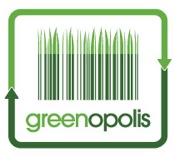Diapers: Why the Meat is So Tender
Just ask the cows...
Diapers: Why the Meat is So Tender
After three months of looking in waste bins in northern Europe, I traveled to Mexico in Jan 2009. Academically, I wanted to juxtapose waste management in developing countries with the systems I had seen in Europe. Recreationally, I wanted to get some sun and learn how to kite-board.
I landed on the shores of La Ventana, south of La Paz, Baja, Mexico: an international playground for kite-boarders and windsurfers.
After pitching my tent in the campground, I walked across the sandy road to get a burrito. Being the kind of place where everyone is approachable, I commented to the table next to me, “This meat is delicious!” The man looked up and nodded his head. After wiping his mouth, he said, “It’s the cows: they eat diapers. It’s why the meat is so tender.” My chewing slowed. Diapers? Really?
The next day, I visited the dump up the hill. Sure enough, I saw cows eating diapers. They ate everything. They would nudge their heads into the pile, find something tasty, pull it up, and munch. Sometimes their horns would hook a plastic bag. The bags then looked like earrings.
To me, the truly interesting part of the pile of waste pile was looking beyond the cows, buzzing flies and smoldering landscape. I felt like a detective anthropologist when I spotted a shredded windsurf sail: evidence of the local culture.
How many other dumps in Mexico hold windsurfing and kite-boarding detritus?
My visits to the dump became regular as I got to know Ernesto, the waste manager for the campground. He came by in the mornings to rake the campground and empty the trashcans. Ernesto was a hard worker and very friendly. Even though he was very discreet and never gossiped, I contend that he knew everybody’s business, diapers or otherwise. I took pictures and asked questions.
Ernesto described how, in the rainy season, floods picked up waste from the dump and the riverbeds and carried it out to the sea. A lot of the waste would then wash back up on the shore. He would rake up the bottles, bags, and butts from the beach and bring them back up to the dump.
His story—a positive indicator of good job security if nothing else—reminded me of the saying, “There is no such thing as ‘away’.”
Though these observations were mostly anecdotal, I continued to think of waste as the means through which to tell a story. My growing file of pictures of trash from different corners of the world served as evidence of different cultures. This particular population in La Ventana played with wind & water by day, and beer by night.
I now say that if you want an accurate assessment of a person, forget their appearance, ignore their salary, and don’t even glance at their holiday card sent out last month. Instead, look in their trashcan. Or ask the cows.
Meredith Sorensen is a guest blogger for Greenopolis. In 2008-2009, she traveled on a Stevens Fellowship to research waste management systems in Europe and Central America. She currently works for Harvest, a North American company that extracts value from organic waste.
Greenopolis.com is dedicated to our users. We focus our attention on changing the world through recycling, waste-to-energy and conservation. We reward our users for their sustainable behaviors on our website, through our Greenopolis Tracking Stations and with curbside recycling programs.
GREENOP4001

